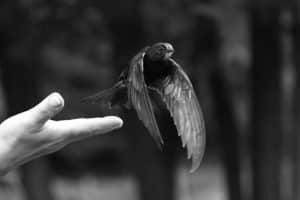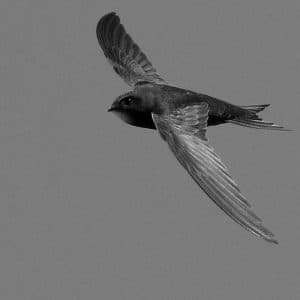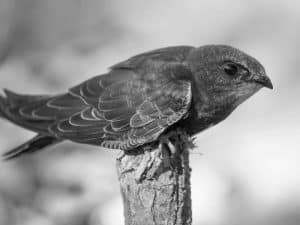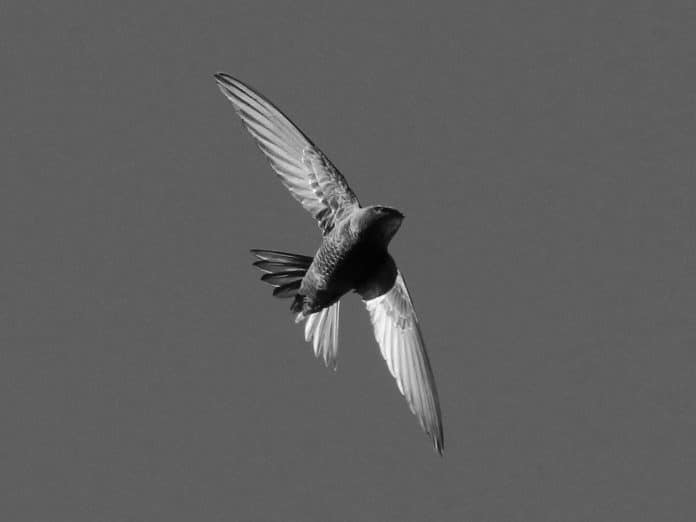Introduction to Swifts in Tanzania
Tanzania, a country in East Africa, is not only known for its stunning landscapes and diverse wildlife but also for being a birdwatcher’s paradise. One species that captures the imagination of bird enthusiasts is the swift in Tanzania. With their incredible aerial acrobatics and unique adaptations, swifts are a true wonder of the avian world. In Tanzania, you can find a wide variety of swift species, each with its own fascinating characteristics. Join us as we explore the astonishing world of swifts in Tanzania and discover why this country is a dream destination for birdwatchers.
The Diverse Species of Swifts Found in Tanzania

Tanzania is home to an impressive array of swift species, making it a hotspot for bird lovers. Among the most common species are the African Black Swift, Little Swift, and African Palm Swift. The African Black Swift is a large, dark-colored bird with a distinctive white patch on its throat. It can be found near water sources such as rivers and lakes, where it feeds on insects. The Little Swift, as its name suggests, is the smallest species of swift in Tanzania. Its slender body and long, narrow wings allow it to navigate through the air with great agility. Finally, the African Palm Swift is known for its unique nesting behavior. Unlike other swifts, it builds its nest on the trunks of palm trees using saliva and plant materials.
Understanding the Habitat and Behavior of Swifts
To fully appreciate the world of swifts in Tanzania, it is important to understand their habitat and behavior. Swifts are highly adapted to life in the air, spending most of their lives on the wing. They have long, slender wings and a streamlined body, which allow them to fly with remarkable speed and maneuverability. Swifts are also known for their distinctive flight pattern, characterized by rapid wingbeats and sharp turns. They feed on a diet of insects, which they catch in mid-air using their wide, gaping mouths.
Swifts are typically found in open habitats such as savannas, grasslands, and wetlands. They rely on these areas for foraging and nesting. Many swift species are migratory, traveling long distances in search of food and suitable breeding grounds. In Tanzania, you can observe swifts during both the wet and dry seasons, as they adapt to the changing availability of insects. During the wet season, swift numbers tend to increase as insect populations thrive.
The Best Time to Visit Tanzania for Swift Watching
If you are planning a birdwatching trip to Tanzania to observe swifts, it is important to choose the right time of year. The dry season, which runs from June to October, is generally considered the best time for birdwatching in Tanzania. During this period, the weather is mild, and bird activity is at its peak. Swifts, in particular, are more active during the early morning and late afternoon when insect activity is high. It is recommended to plan your birdwatching outings during these times for the best chance of spotting swifts in action.
Tanzania’s Top Locations for Observing Swifts

Tanzania offers a wealth of locations for observing swifts in their natural habitat. One of the most popular destinations is the Serengeti National Park, known for its vast savannas and diverse wildlife. Here, you can witness swifts soaring through the air, chasing insects in a synchronized display of agility. The Ngorongoro Crater, a UNESCO World Heritage Site, is another excellent spot for swift watching. The crater’s unique ecosystem attracts a variety of bird species, including swifts. As you explore the crater rim, keep an eye out for these incredible birds darting across the sky.
Another must-visit location is Lake Manyara National Park, famous for its tree-climbing lions and abundant birdlife. The park’s dense forests and wetlands provide an ideal habitat for swifts. Look for them near water sources and around the park’s towering fig trees. Finally, the Selous Game Reserve, the largest protected area in Africa, offers a truly immersive birdwatching experience. From the banks of the Rufiji River to the vast grasslands, swifts can be spotted in various habitats throughout the reserve.
Tips for Spotting and Identifying Swifts in Tanzania
Spotting and identifying swifts can be a thrilling experience, but it requires some knowledge and patience. Here are a few tips to help you make the most of your swift watching adventures in Tanzania:
- Use binoculars: Swifts are often seen high in the sky, making it difficult to observe their features. A good pair of binoculars will help you get a closer look and identify different species based on their distinctive markings.
- Look for specific flight patterns: Swifts have a unique flight pattern characterized by rapid wingbeats and sharp turns. Familiarize yourself with these patterns to quickly spot swifts in the sky.
- Listen for calls: Swifts have distinct calls that can help you locate them. Pay attention to their high-pitched screeches and chirps, which are often heard during feeding or breeding.
- Observe nesting behavior: Swifts build their nests in specific locations, such as cliffs, caves, and man-made structures. Keep an eye out for these nesting sites, as they can provide valuable opportunities to observe swifts up close.
- Join a guided birdwatching tour: If you’re new to birdwatching or want expert guidance, consider joining a guided tour. Experienced birdwatching guides can help you spot and identify swifts, as well as provide valuable insights into their behavior and habitat.
Conservation Efforts for Swifts in Tanzania

Swifts, like many other bird species, face various threats to their survival, including habitat loss, climate change, and poaching. Fortunately, there are ongoing conservation efforts in Tanzania aimed at protecting swift populations and their habitats. Organizations such as the Tanzania Birdwatching Society work to raise awareness about the importance of swift conservation and promote sustainable birdwatching practices. By supporting these initiatives and practicing responsible birdwatching, we can contribute to the preservation of swifts and their remarkable world.
Other Bird Species to Look Out for While Birdwatching in Tanzania
While swifts are undoubtedly a highlight of birdwatching in Tanzania, the country is home to a staggering number of bird species. From the iconic African Fish Eagle to the vibrant Lilac-breasted Roller, there is no shortage of avian wonders to discover. Keep an eye out for the Grey-headed Kingfisher, whose striking plumage stands out against the lush greenery. The Marabou Stork, with its massive wingspan and distinct bald head, is another fascinating species to observe. And don’t forget about the colorful bee-eaters, such as the Blue-cheeked bee-eater and the European bee-eater, which can be found in various habitats across Tanzania.
Recommended Resources for Learning More About Swifts in Tanzania
If you’re fascinated by swifts and want to delve deeper into their world, there are several resources available to expand your knowledge. The book “Birds of East Africa” by Terry Stevenson and John Fanshawe provides comprehensive information on the bird species found in Tanzania, including swifts. For more specific information on swifts, “Swifts: A Guide to the Swifts and Treeswifts of the World” by Phil Chantler and Gerald Driessens is an excellent reference. Additionally, online platforms such as eBird and the African Bird Club offer valuable resources, including species checklists, birding hotspots, and trip reports from fellow birdwatchers.
Conclusion
Tanzania truly is a birdwatcher’s paradise, and swifts are among the most captivating species to observe. From their aerial acrobatics to their unique adaptations, swifts have a charm that is hard to resist. Whether you’re a seasoned birdwatcher or a novice enthusiast, a trip to Tanzania will open your eyes to the astonishing world of swifts. So grab your binoculars, pack your birding gear, and embark on an unforgettable adventure to discover the swifts of Tanzania.


































